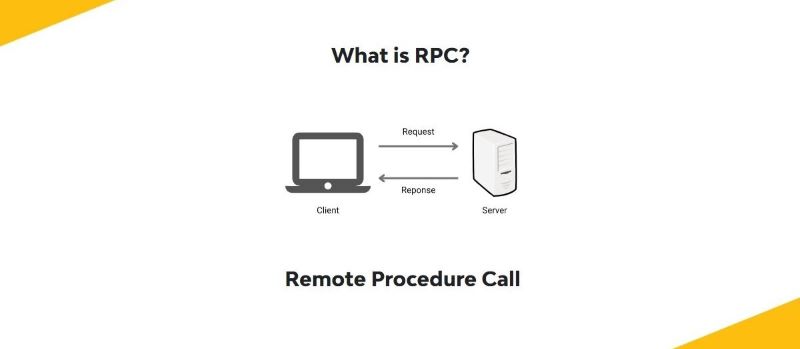When it comes to developing distributed systems and web services, understanding the differences between Remote Procedure Call (RPC) and Representational State Transfer (REST) is crucial. Both methodologies offer unique benefits and come with their own sets of challenges. In this guide, we’ll explore what RPC and REST are, how they work, and when to use each, helping you make informed decisions for your next project.
Introduction to RPC (Remote Procedure Call)
Definition of Remote Procedure Call
RPC (Remote Procedure Call) is a method of computer networking that allows a program (client) to send a request and receive a response over a network. It simplifies the execution of remote calls as if the procedures were executed locally, thereby abstracting the complexity of data transmission across the network.
Protocols for Remote Procedure Call
RPC can be implemented using various protocols, including:
- XML-RPC: Uses XML to encode the calls and JSON to exchange data.
- JSON-RPC: A lighter protocol that uses JSON for encoding and decoding calls and data.
- gRPC: A modern protocol based on HTTP/2 and Protocol Buffers, offering high performance and better scalability.
Advantages and Disadvantages of RPC
Advantages
RPC is known for its high performance and ease of use. It provides a programming interface similar to local function calls, allowing developers to interact with remote services without dealing with the complexities of network details.
Disadvantages
RPC can encounter issues with tight coupling between system components, making changes and maintenance more complex. Additionally, RPC may not be well-supported on all browsers, and handling error scenarios and security may require extra effort.
When to Use RPC
RPC is an ideal choice for building distributed systems, microservices, or applications requiring internal communication with specific scenarios. It is particularly useful when performance and ease of use are top priorities and when a robust method for executing remote calls is needed.
Introduction to REST (Representational State Transfer)
Definition of REST
REST (Representational State Transfer) is a web-based software architecture that enables access and interaction with resources through URLs and HTTP methods such as GET, POST, PUT, and DELETE. REST is designed to provide a simple and efficient approach to building web services and APIs.
Capabilities and Limitations of REST
Advantages
- Clear Interface: REST uses basic HTTP methods and clear URLs, making it easy to design and implement web services.
- High Scalability: REST supports high scalability due to its stateless nature, allowing for the expansion and management of large-scale services without encountering complex issues.
Cross-Platform Interaction: REST easily interacts with various platforms and technologies through the use of common web standards like HTTP and JSON or XML.
Disadvantages
- Network Resource Usage: REST calls may require more network resources, especially when transmitting large amounts of data, which can impact performance.
- Loose Data Type Validation: REST does not enforce strict data type validation, which can lead to errors due to incorrect or incompatible data.
- No State Management: REST requires each request to contain all necessary information to process the request without relying on state between requests, potentially leading to increased data transmission and complex state management.
When to Use REST
REST is suitable for building web services, APIs, and large-scale distributed systems. It is particularly effective in scenarios that require multi-platform integration, where REST’s simplicity and scalability offer clear benefits. REST is well-suited for projects that need web-based communication with scalability and maintainability in mind.
Differences between REST and RPC (Remote Procedure Call)
How They Work
RPC (Remote Procedure Call): RPC operates by invoking a specific function or procedure on a remote server. This process is akin to calling a local function in programming, but instead of executing on the same machine, it occurs over a network. The client must know the exact function name and required parameters, focusing on executing specific server-side functionalities.
REST (Representational State Transfer): REST functions by performing CRUD (Create, Read, Update, Delete) operations on resources identified by URLs, using HTTP methods such as GET, POST, PUT, and DELETE. REST emphasizes managing the resources and their state rather than calling specific functions, enabling interaction with resources in a straightforward and scalable manner.
Development Timeline
RPC (Remote Procedure Call): Developed in the late 1970s and early 1980s, RPC was designed to support distributed systems early on, providing a traditional method for remote procedure calls.
REST (Representational State Transfer): Developed in 2000 by Roy Fielding as part of his doctoral dissertation, REST is a modern web architecture designed to meet growing demands for web integration and communication.
Data Formats
RPC (Remote Procedure Call): Data formats in RPC are often dictated by the server and are less flexible. RPC may require strict rules for how data is formatted and transmitted, which can limit interoperability with other systems or necessitate complex data conversion processes.
REST (Representational State Transfer): REST is more flexible regarding data formats, supporting various formats such as JSON and XML. This flexibility allows REST to easily integrate with diverse systems and technologies, accommodating a broader range of data types in communication.
RPC and REST each have their distinct advantages and limitations, and the choice between them depends on the specific needs of the application and system. RPC, with its focus on calling specific functions, is well-suited for applications that require remote execution of particular server-side functions.
In contrast, REST, with its flexible resource management and broad data format support, is often used in modern, large-scale web and distributed systems.
Stay ahead in the Crypto World with Dynamic Crypto Network!







